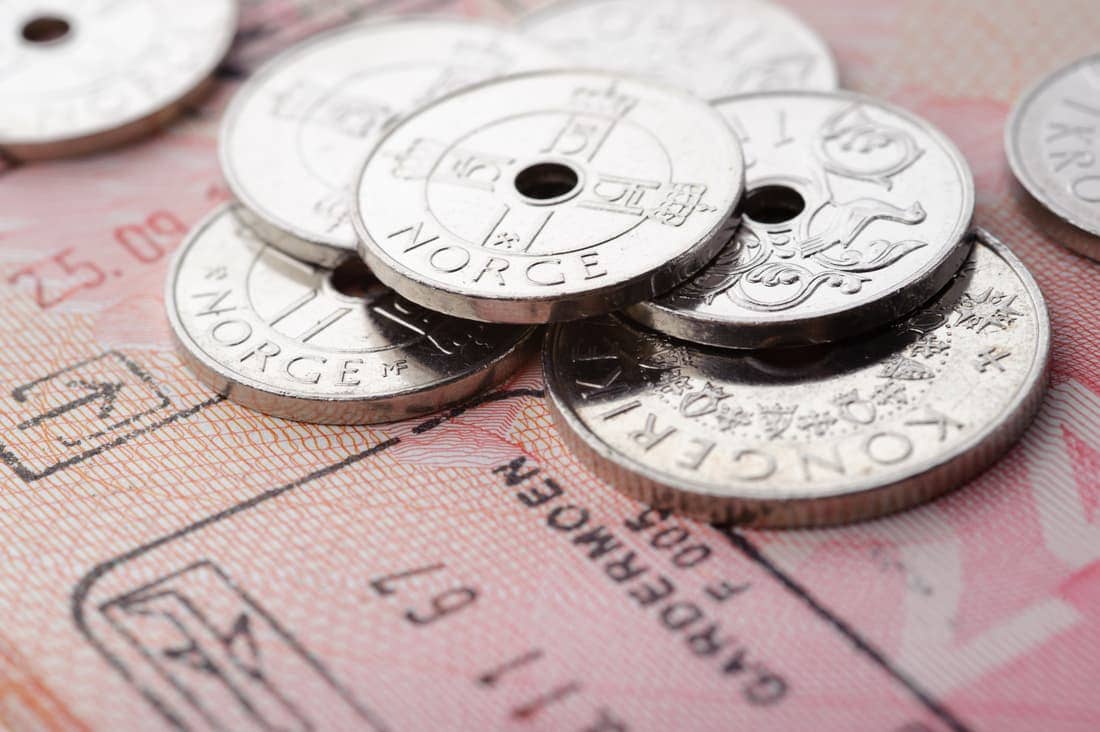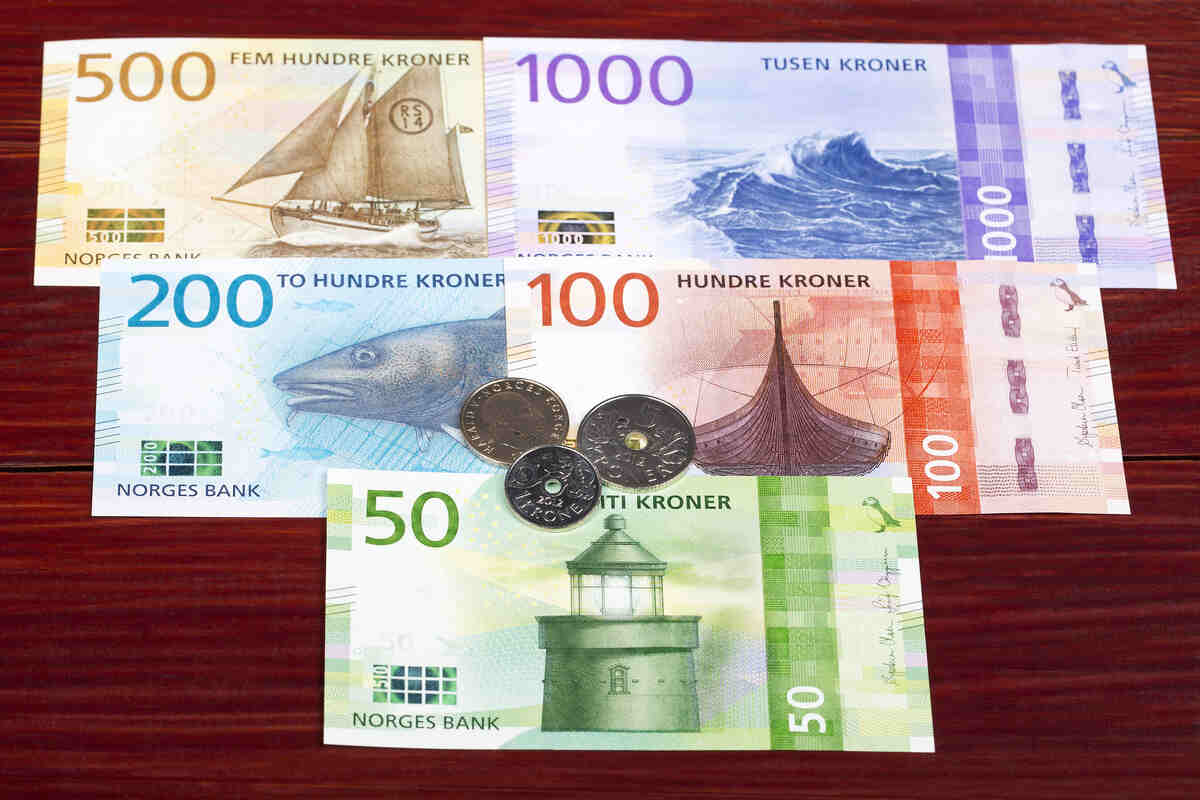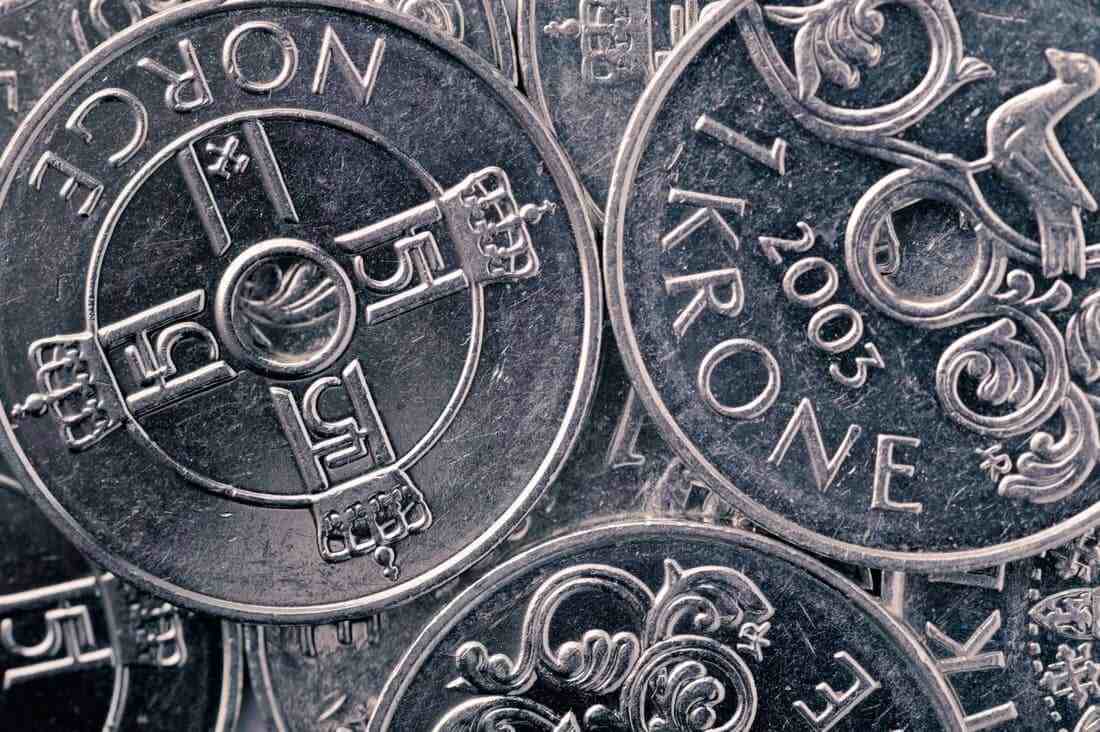From Norse Roots to Modern Riches: The History of the Norwegian Krone
The Norwegian krone boasts a fascinating history that mirrors the nation's economic and cultural evolution. From its roots in the Norse civilization to its modern status as a symbol of Norway's prosperity and stability, the krone has evolved alongside the nation it represents.
In this article, we will take a look at the fascinating story of the Norwegian Krone, examining its origins, its role in Norway's economy, and its current status as a modern and thriving currency. So, let's dive into the world of the Norwegian krone and uncover the significance of this unique and vital part of Norway's identity.
History of the Norwegian Krone
In 1875, a new chapter in Norway's monetary history began as the krone was introduced, replacing the Norwegian speciedaler/spesidaler at an exchange rate of 4 kroner for every speciedaler. This move marked Norway's entry into the Scandinavian Monetary Union, formed in 1873.
The Scandinavian Monetary Union was a pact between Denmark, Norway, and Sweden. This pact established a shared currency, the krone, and appointed fixed exchange rates between the three countries. It allowed for the free circulation of these currencies until 1914, when the gold standard was suspended due to World War I.
When the gold standard was suspended, the parity among the currencies of Denmark, Norway, and Sweden ended. Since then, these currencies were no longer considered equivalent to one another.
Norwegian Krone and The Gold Standard

As part of the Scandinavian Monetary Union, the krone operated under a gold standard, with 1 krone equal to 403.226 milligrams of gold. However, this standard was temporarily suspended from 1914 to 1916 and again from 1920 to 1928 before being permanently discontinued in 1931.
The krone's value was then linked to the pound sterling. The rate was 1 pound to 19.9 kroner in 1933. The value was later linked to the US dollar at a rate of $1 to 4.4 kroner in 1939. These changes reflect the krone's shifting value and exchange rates amidst political and economic shifts both within Scandinavia and globally.
Switch to A Floating Exchange Rate System
In response to intense speculation on the Norwegian currency in the early 1990s, the Central Bank of Norway transitioned from a fixed exchange rate system to a managed float in December 1992. This led to defensive purchases of the NOK using foreign currency reserves, resulting in a loss of around two billion kroner for the central bank in a relatively short period.
The Norwegian Krone Today: Challenges and Exchange Rates
While traditionally referred to as the Norwegian crown in English, this term has become less commonly used. The krone is theoretically divided into 100 øre, although coins denominated in øre were phased out in 2012.
As of April 2010, the krone ranked as the thirteenth most traded currency globally, slipping three positions from its 2007 standing. The Norwegian krone is commonly abbreviated as kr, NKr, or NOK.
Challenges Related to the Norwegian Krone
The Norwegian krone has been on a bit of a wild ride recently due in large part to the Norwegian central bank's tinkering with interest rates. This has caused the krone to fluctuate against other major currencies, like the US Dollar. And it's not just the US Dollar - Krone fluctuations can also impact exchange rates with other currencies like the Euro, the Pound Sterling, or the Japanese Yen.
The global oil trade also plays a significant role in maintaining the stability of the Norwegian krone. The reason the Norwegian krone is tied to the price of oil is because oil is such a critical part of Norway's economy. Norway is a major player in the global oil market, with massive oil reserves in the North Sea.
In fact, oil and gas constitute around 20% of Norway's GDP, and oil and gas exports account for more than half of the country's total exports. So when the price of oil rises, Norway's economy tends to boom, and the krone becomes more attractive to investors. Conversely, when oil prices drop, the economy can suffer, and the krone can lose value.
Exchange Rates
As of January 2024, these are the exchange rates for the Norwegian krone (NOK) to major world currencies:
1 US dollar (USD) = 10.43 NOK
1 British Pound (GBP) = 13.25 NOK
1 Euro (EUR) = 11.28 NOK
1 Japanese Yen (JPY) = 0.071 NOK
1 Swiss Franc (CHF) = 12.09 NOK
Ready to sell?
Are you ready to sell your currency? Stop waiting and request a Shipping Kit. We will provide everything you need to ship and receive funds for currencies you own.
Norwegian Krone Banknotes

The Norwegian krone banknotes boast a vibrant array of designs that showcase the country's rich maritime heritage and natural beauty.
- 50 kr Banknote: The front of the 50 kr banknote features the Utvær Lighthouse, situated in a protected nature reserve, with a color scheme dominated by green. On the reverse side, a stylized lighthouse beacon and Karlsvogna (Big Dipper) are depicted.
- 100 kr Banknote: The 100 kr banknote showcases a stylized container ship, a globe, and an Orion on the front, with a striking red color. On the back, the iconic Gokstad ship takes center stage.
- 200 kr Banknote: In calming blue, the 200 kr banknote displays a codfish on the front. The reverse side features a stylized fishing boat, fishing net, and beacon.
- 500 kr Banknote: The 500 kr banknote, adorned in bold orange, depicts the RS 14 Stavanger rescue ship on the front, which became renowned in Norwegian waters. The reverse side of the note features a stylized representation of an oil platform, along with a network of gas pipelines from the North Sea and a prehistoric fossil known as an ammonite.
- 1000 kr Banknote: The regal purple 1000 kr banknote features a wave in the sea on the front. On the reverse side, there is a stylized horizon and water molecules.
As you can see, each banknote provides a visual tapestry of Norway's cultural and natural wonders.
Norwegian Krone Coins

Norwegian Krone coins feature captivating designs that reflect the nation's cultural and historical significance.
- 1 Krone Coin: The 1 Krone coin features Harald V's monogram on the obverse side, while the reverse side showcases an image of a fowl.
- 5 Kroner Coin: On the obverse of the 5 Kroner coin is the St. Olav's Order, and the reverse side is adorned with acanthi leaves.
- 10 Kroner Coin: The 10 Kroner coin displays Harald V's likeness on the obverse side, while the reverse side features the intricate design of a stave church roof.
- 20 Kroner Coin: Harald V's image is also found on the obverse of the 20 Kroner coin, and on the reverse side, a Viking ship takes center stage, representing the rich maritime history of Norway.
These regal monograms, historical orders, and maritime symbols encapsulate Norway's rich tapestry, turning every coin into a tangible piece of the nation's proud legacy.
Can You Use the Euro in Norway?
Norway is not currently using the Euro as its currency. Norway is a member of the European Economic Area (EEA), which means it has access to the EU's single market. Still, it is not a member of the European Union (EU). This means that Norway has opted not to adopt the Euro as its official currency.
Norway wants to maintain control over its own monetary policy and interest rates rather than surrender that control to the European Central Bank. So, for now, the krone remains Norway's official currency, and the country continues to use it for all of its internal and international transactions.
Can You Exchange Norwegian Krone in Europe?
In October 2023, The Norges Bank issued a statement about the difficulties related to exchanging the Norwegian krone abroad. In this situation, Norges Bank recommends that Norwegians planning a trip abroad consider exchanging NOK for foreign currency before departure or using cards or other electronic means of payment during the trip itself.
What is the Future of Norwegian Krone?
Norway appears to be moving towards a future of fully digital currency, as the country's former governing party has committed to eliminating paper money by 2030. The first step in this transition was the removal of the legal obligation for businesses to accept cash payments.
Additionally, Norges Bank's researchers are scheduled to provide a recommendation by 2025 regarding the potential introduction of a central bank digital currency (CBDC) in Norway.
This shift towards a cashless society is likely to be driven by the convenience and security of digital payments, as well as the government's desire to combat money laundering and other financial crimes.
Will The Norwegian Krone Remain Volatile?
Predicting the future volatility of a currency is a bit like trying to forecast the weather. There are a lot of variables, and it's hard to know exactly what will happen! But here are a few things that could impact the volatility of the Norwegian krone in the future:
- Oil prices: As we discussed earlier, the price of oil has a big impact on the krone's value. If oil prices become more stable in the future, that could mean less volatility for the krone. But if oil prices continue to be volatile, that could lead to more ups and downs for the krone.
- Interest rates: Potential future adjustments to interest rates could also influence the volatility of the krone. Typically, increases in interest rates lead to a strengthening of the currency, while reductions can result in a weakening.
- Global economic conditions: If there are major changes in the global economy, like a recession or a major shift in trade policies, that could impact the krone as well.
Overall, the krone's volatility is likely to continue in the future, but how much volatility there is could depend on a lot of different factors.
Can You Exchange Norwegian Krone in the US?
If you need Norwegian Krone in the US, it can be hard to find. But you can order it online from US First Exchange. We will deliver the money to your home in 1-2 days. You can order any amount you want, and your money will be safe and protected. With US First Exchange, getting Norwegian krone is easy and convenient.
You can also get other global currencies, such as Iraqi Dinar, Vietnamese Dong, and more. Discover a hassle-free way to exchange any currency with the click of a button on our intuitive online platform, complete with insured shipping to ensure your money arrives safely and securely.
Ready to buy?
Are you ready to buy your currency? Stop waiting and request a Shipping Kit. We will provide everything you need to ship and receive funds for currencies you own.


